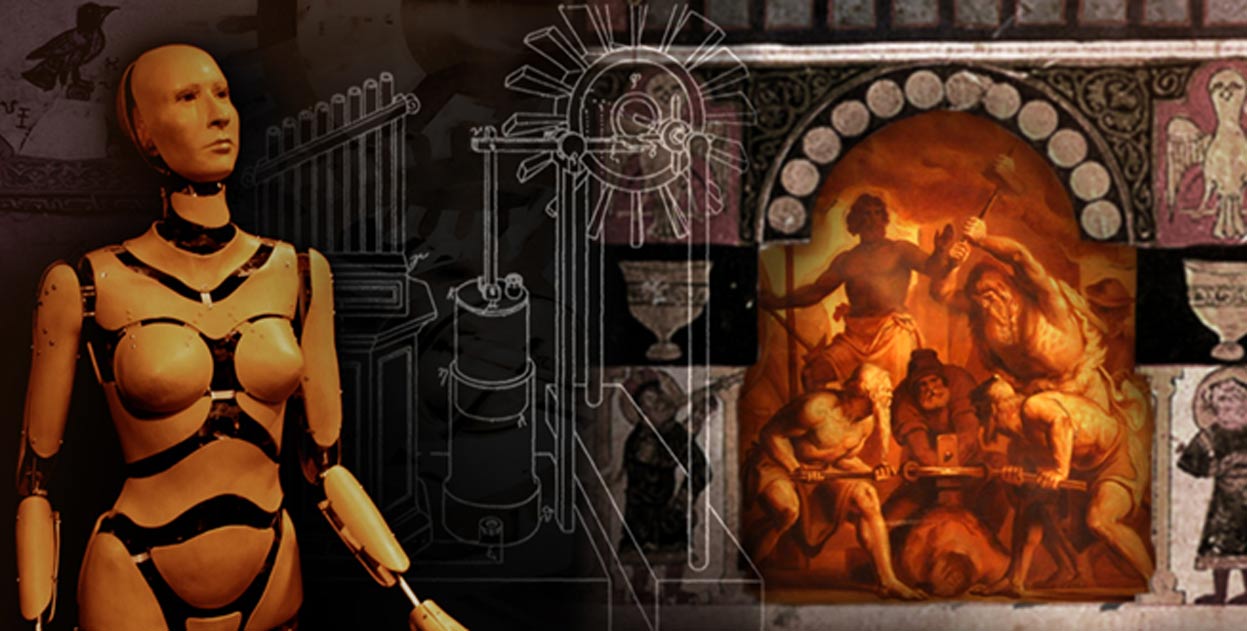
Ancient Automata: The Magic of the Mechanical Realm and Machines Brought to Life
When the dark magician was wheeled out before the audience—with an eerie and inscrutable expression on his face, and dressed in mystical robes and bejeweled turban—a hush fell over the court of Empress Maria Theresa of Austria. It was 1770, and inventor Wolfgang von Kempelen boasted that no human would be able to defeat the magician at his game: chess.
This seemed an incredible claim, as the magician clearly had no brain. The magician was not human, but a construction; a prop in man’s clothing. Lifeless and still, it had a human-looking head and torso, a black beard, and was dramatically dressed in Turkish robes as an “oriental sorcerer.” The look was completed with a long Turkish smoking pipe.
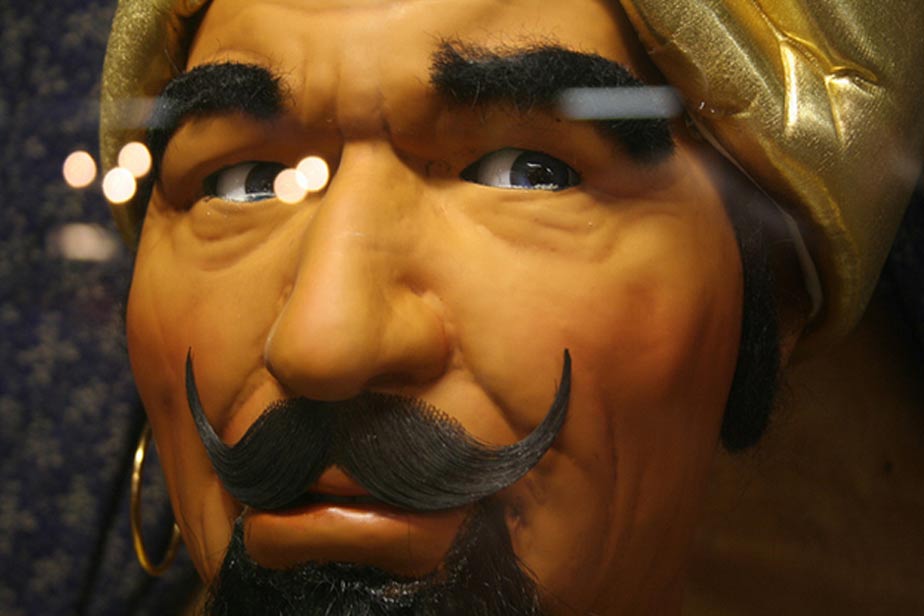
“How he captivates. His eyes slowly go back and forth…” (Flickr/CC BY 2.0)
It sat lifeless behind a wooden cabinet filled with shining brass gears and clockwork parts. On the cabinet rested a chess board and pieces.
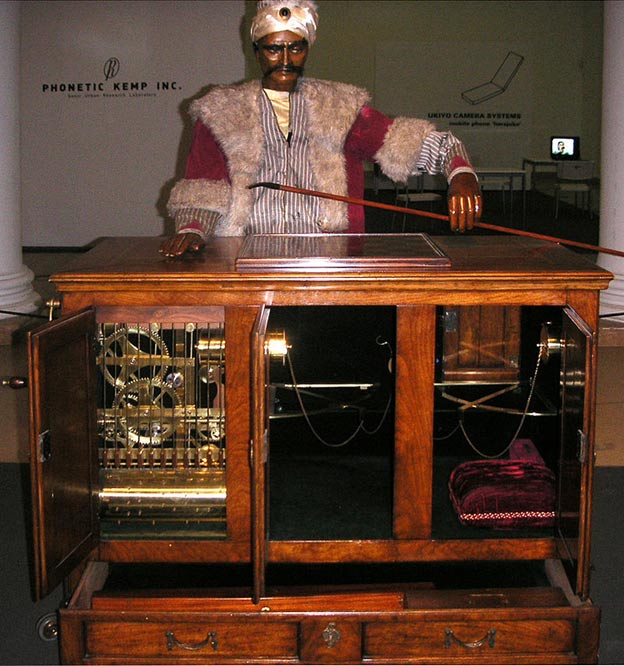
A reconstruction of the Turk, chess-playing automaton designed by von Kempelen in 1770. (CC BY-SA 3.0)
But Kempelen carefully wound a mechanism in the device, and when the sorcerer lifted its silver gaze, and raised its hand—seemingly impossibly—the crowd cried out in shock, amazement, and horror.
The ‘Turk,’ as it became known, went on to defeat all challengers in the game of chess, including experts, royals, statesmen, and sharp intellects, such as Benjamin Franklin and Napoleon Bonaparte.
The Mechanical Turk (or Automaton Chess-player) was the amazing result of a challenge to impress the Empress of Austria. Invented and built by von Kempelen, it is now said the astonishing machine was an 18th century hoax, as it was not fully autonomous but an ingenious deception, and a blend of machine and man. It seemingly did not play and win games of chess against thinking humans just by the act of winding its clockwork springs alone.
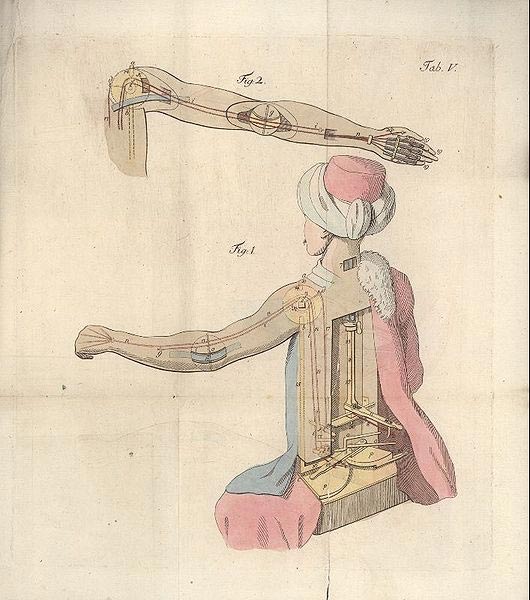
From book that tried to explain the illusions behind the Kempelen chess playing automaton after making reconstructions of the device. 1789 (Public Domain)
It’s reasoned by historians that the cabinet held small men who were experts in chess, and they remained hidden within the cabinet, in an amazing illusion. It’s believed somehow, without detection, these men operated the movements of the Turk and defeated all players. As the Turk was destroyed in a fire July 5, 1854 we’ll never know the truth.
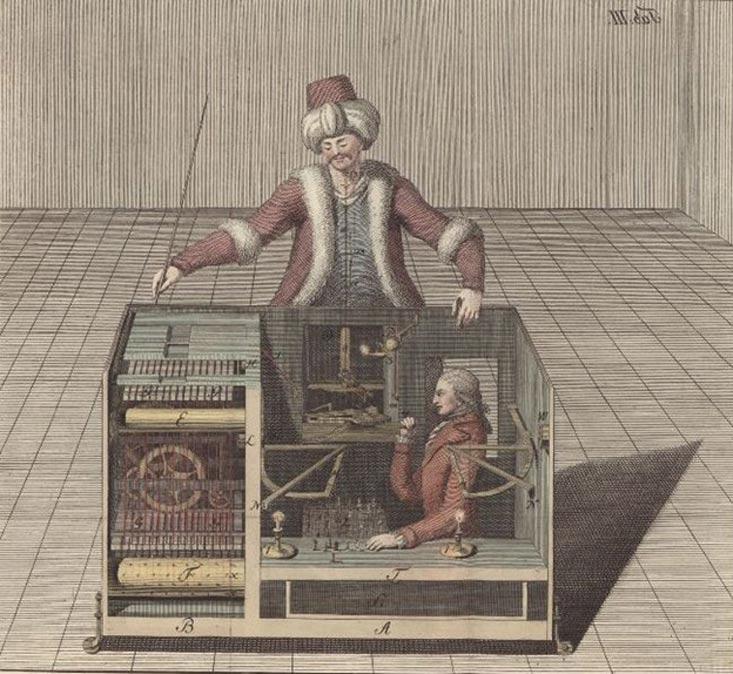
Is the mystery of the Turk solved by the theories of a hidden man? (Public Domain)
Ancient Automatons, Myth and Machines
The Mechanical Turk is not the beginning of robots, automatons, or what appear to be ‘thinking’ machines. Far from it, as such mechanical imaginings didn’t show up in Europe until the turn of the 14th century, towards the end of the Middle Ages.
E.R. Truitt writes in Preternatural Machines, “Musical fountains. Robotic servants. Mechanical beasts and artificial songbirds. Most were designed and built beyond the boundaries of Latin Christendom, in the cosmopolitan courts of Baghdad, Damascus, Constantinople and Karakorum. Such automata came to medieval Europe as gifts from foreign rulers, or were reported in texts by travelers to these faraway places.”
Machines or models that could be compelled to move on their own—dead materials brought to life at the command of their creator—have captivated humanity since ancient times.
Homer first used the word ‘automaton,’ from the Greek αὐτόματον, meaning “acting of one’s own will.” He chronicled early automatic doors, such that would move on wheeled tripods.
The word now is usually used to describe a moving machine, especially ones resembling animals or humans, which are often non-electronic and with moving parts that need to be wound up, such as cuckoo clocks, animated figures, or toys.
The oldest written stories of automata are found in the myths and legends of ancient Greece.
Hephaestus Crafted Automatons for the Gods
Hephaestus, son of Zeus, was Greek god of metallurgy, fire, forges and sculpture, was said to have created an army of robots, or automatons, which helped him in his forge. The blacksmith deity was tasked with crafting the weapons and tools of the gods, and he did this with the help of his metallic machines: bronze animals, men, and beasts.
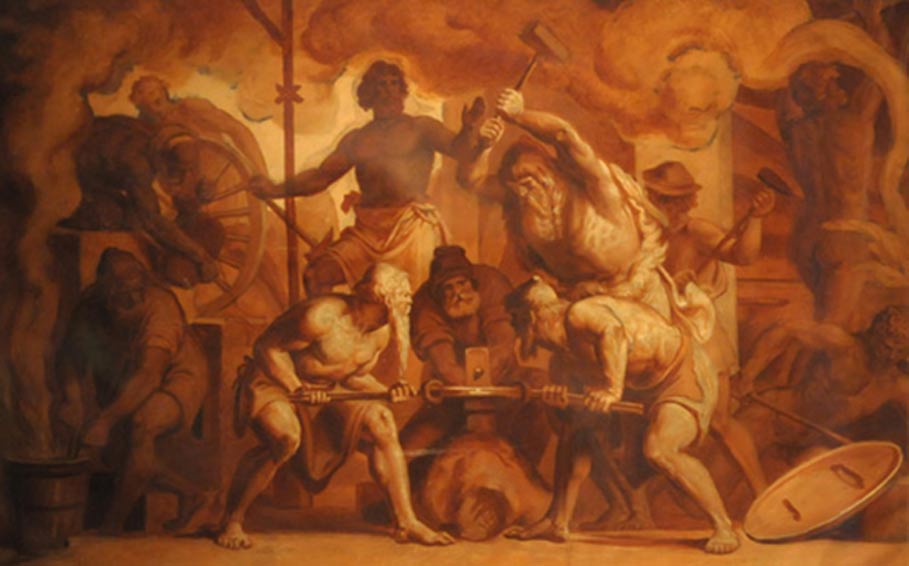
The Forge of Vulcan (the Roman counterpart to Hephaestus). (Public Domain)
In the epic Argonautica, circa third century BC, the poem tells of the voyage of Jason and his crew of Argonauts to retrieve the golden fleece. At one point the men face a giant metal construct, Talos, which had been forged by Hephaestus. Talos, an enormous bronze man protected his island from invaders such as Jason by throwing enormous boulders at passing ships. He was ‘programed’ to circle the island three times daily while guarding it.

A coin featuring a large, winged Talos armed with a stone. The robot was built to repel invaders. Silver didrachma from Phaistos, Crete, circa 300/280-270 BC. (Public Domain)
He had been created with a single vein that ran from his neck to his ankle, which was sealed with a bronze nail. Talos’ artificial nature was his ultimate undoing. While appearing to be a giant man, he didn’t have a human’s brain. So rudimentary was his intelligence, that Talos was deceived into pulling the nail out of his own ankle, and “the ichor ran out of him like molten lead.” The dangerous automaton had been bested.
But Talos was not Haphaestus’ only automaton in legend. He is said to have forged the Golden Tripods of Olympus:
"[Thetis] found him working with his bellows, moving round, sweating in his eager haste. He was forging twenty tripods in all, to stand along the walls of his well-built house. Under the legs of each one he was fitting golden wheels, so every tripod might move all on its own into a gathering of the gods at his command and then return to his own house.” (Homer, Iliad)
As well, four bronze horses he created to pull his sons’ adamantine chariot, which “beat the dust with rattling hooves of brass, and they sent out a dry whinnying from their throats.”
It was Hephaestus who in legend built the Caucasian Eagle: a huge, bronze automaton in the shape of a great bird, which was sent daily by Zeus to tear out and devour the ever-regenerating liver of Prometheus.
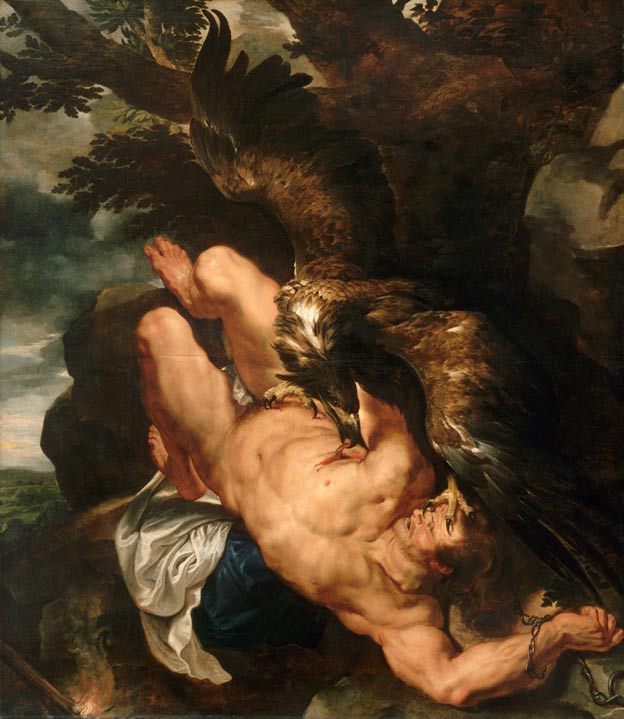
Prometheus suffers torment under the Caucasian Eagle – an automaton. (Public Domain)
The Robotic Handiworks of Greek Inventors
The most primitive automatons were largely curiosities, religious objects, or inventions for exploring or demonstrating scientific principles of the time. But, like we do today, many were created as tools used to assist in daily tasks. But while useful, they were seen as marvels, even magical, and as such sometimes their very creation wandered into the dangerous territory of fear and superstition.
Water-powered automata were popular in the ancient world. Hero of Alexandria (or Heron) (c. 62 AD), invented the steam engine, a steam powered mechanical device called the aeolipile, water- and, wind-driven machines, vending machines, pouring jugs which switched between water and wine, and various other ingenious automata.
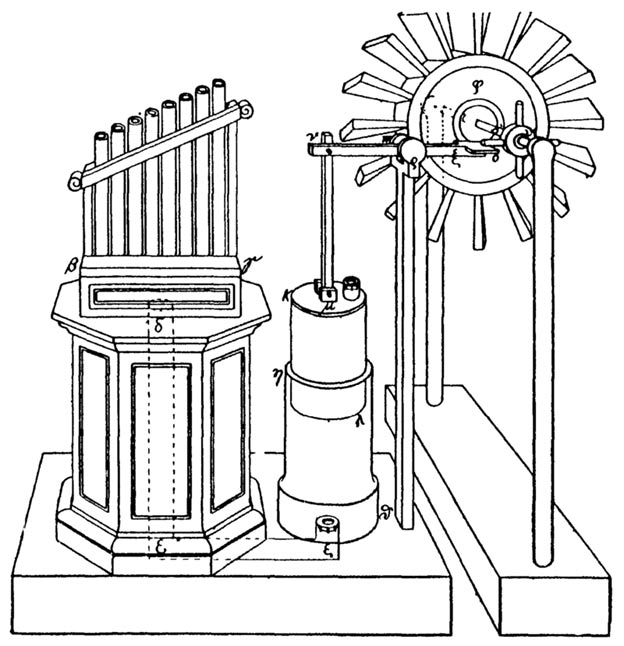
A modern drawing of the reconstruction of the wind organ and wind wheel of Heron of Alexandria. (Public Domain)
One of the more renowned early automatons is the mysterious Antikythera Mechanism. Said to have been designed to calculate the positions of astronomical objects, it is the earliest known analog computer, and dates to between 150 and 100 BC. It has set the bar as an example of the sophisticated mechanical engineering of antiquity. Even after its discovery in 1900 in a shipwreck off of Antikythera, Greece, some investigators were reluctant to credit the ancients with the refined skills to accomplish such marvels.
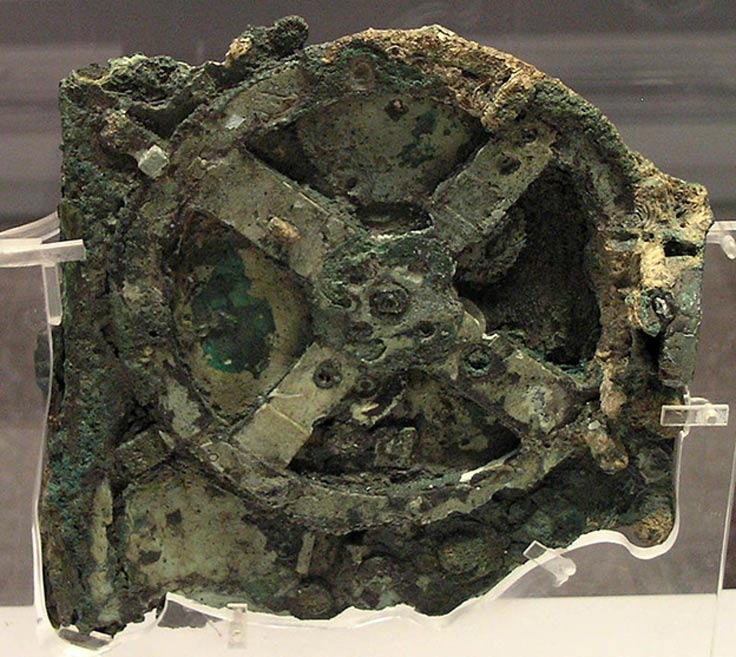
The Antikythera mechanism, front. (CC BY 2.5)
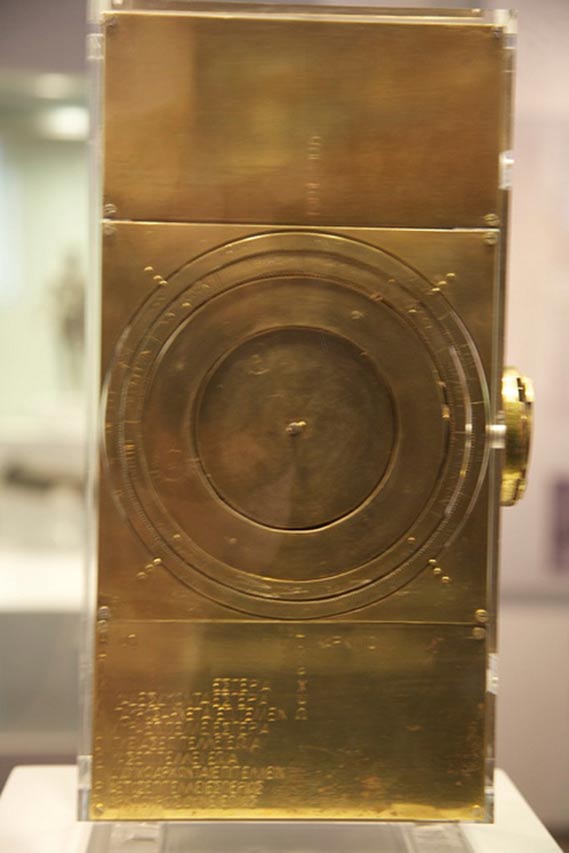
A reconstruction of what the Antikythera Mechanism is thought to have looked like. (Flickr/CC BY 2.0)
Greek mathematician Archytas of Tarentum is credited with first-ever self-propelled flying device, known as the Flying Pigeon in 350 BC. As referenced by Latin author Aulus Gellius five centuries after Achytas’ death, the automaton is reputed to have been a wooden, bird-shaped model suspended on wire which was propelled by a jet of steam up to 200 meters (656 feet).
The bird was said to be hollow and cylindrical, with wooden wings affixed to each side. The front was pointed like a bird’s beak. An internal bladder led to an opening in the back, which connected to an airtight boiler. When the boiler created steam, the bladder would fill, and the pressure would allegedly blast and shuttle the bird from its perch, simulating flight.
Ancient Asian Artificers
The human fascination with the air and the birds that dominate it resulted in many avian-based automatons and clockwork birds, including mechanical flying birds directed by he who pulled the strings, or caged birds that would sing at their master’s will.
Birds featured widely in ancient Chinese automata.
An account in the third-century-BC Daoist text, Liezi, describes a mechanical engineer (called ‘artificers’ at the time) Yan Shi, who has supposedly built a life-size figure of a human. He presented this to King Mu of Zhou (1023 – 957 BC) and the king was impressed—at first. However, for many, the engineering of automata was indistinguishable from magic, demons or spirits.
From Mechanical Bodies, Computational Minds by Stefano Franchi and Güven Güzeldere:
“The king stared at the figure in astonishment. It walked with rapid strides, moving its head up and down, so that anyone would have taken it for a live human being. The artificer touched its chin, and it began singing, perfectly in tune. He touched its hand, and it began posturing, keeping perfect time...As the performance was drawing to an end, the robot winked its eye and made advances to the ladies in attendance, whereupon the king became incensed and would have had Yen Shih [Yan Shi] executed on the spot had not the latter, in mortal fear, instantly taken the robot to pieces to let him see what it really was. And, indeed, it turned out to be only a construction of leather, wood, glue and lacquer, variously colored white, black, red and blue.”
Once King Mou discovered that it was a mechanical beast that could be disassembled and posed no threat, he was delighted by the achievement.
Artificial wooden birds credited to ancient carpenter and engineer Lu Ban (507–440 BC) and his contemporary, philosopher Mozi. These are said to have flown in the air, (probably not unlike Archytas’ Flying Pigeon), according to Chinese texts. Lu Ban is now known as the patron saint of Chinese builders.
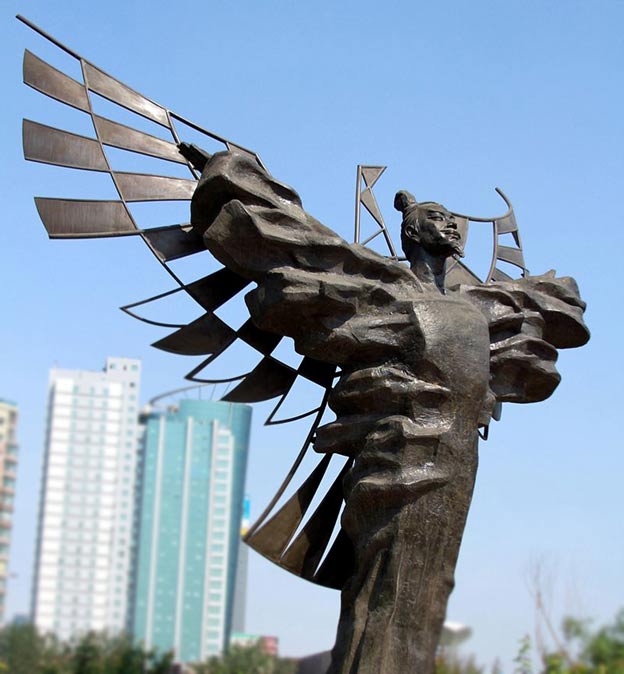
Detail; Sculpture of Lu Ban in Weifang, China (CC BY-SA 3.0)
Automata ranged from the simple to the complex in ancient China, and included a range of toys and tools, such as: mechanized doves, fish, and dragons; wine pourers and cup bearers; singing girls, performing animals; clocks; puppet orchestras; and chariots that moved themselves (ancient ‘auto-mobiles’?)
During the Edo period (1603 – 1867) automata became very popular in Japan. Called karakuri ningyō, the mechanized puppets entertained and awed, and the devices were used in religious festivals, performing traditional myths and legends.
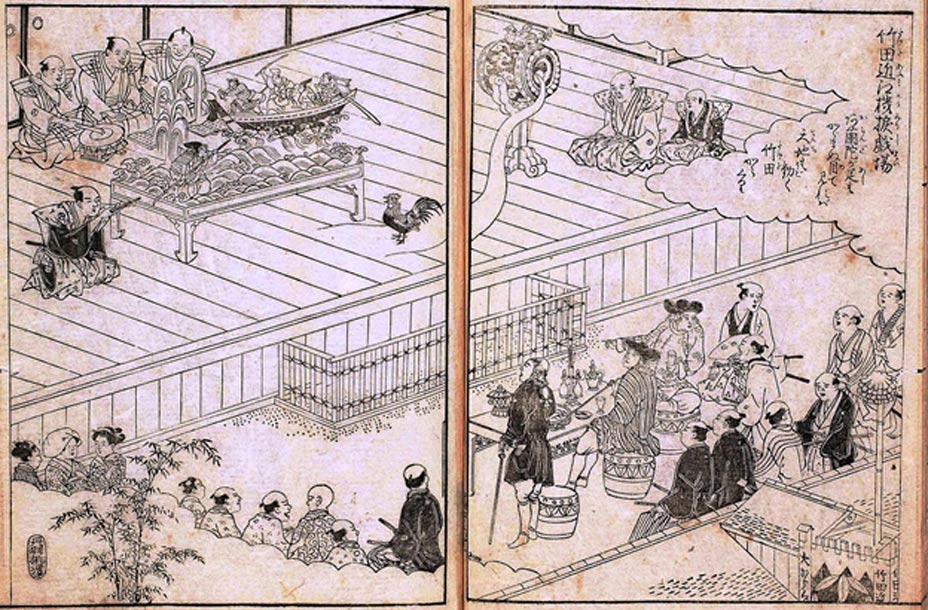
A Japanese automata theater in Osaka, drawn in 18th century. The Takeda family opened their automata theater in 1662. (Public Domain)
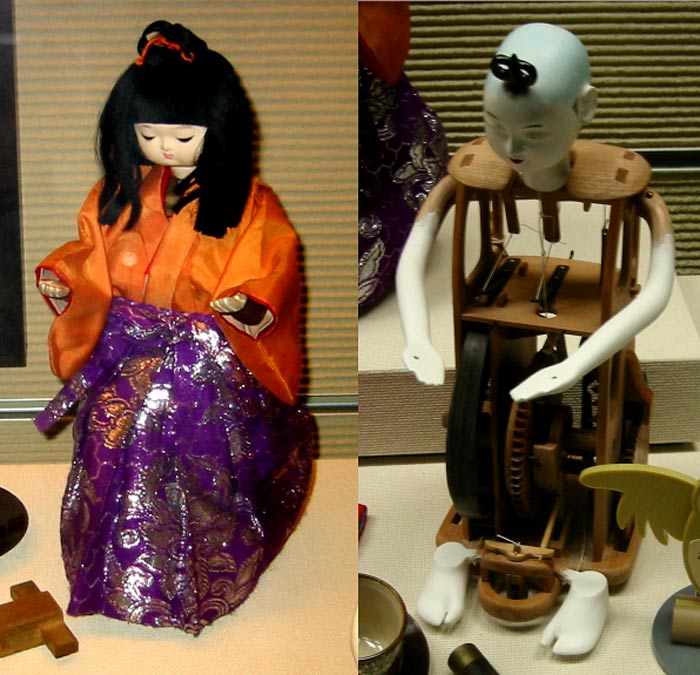
Japanese tea-serving karakuri, with mechanism, 19th century. (Public Domain)
Middle East Masters and their Knowledge of Ingenious Mechanical Devices
The capital of the Byzantine Empire, Constantinople, (modern Istanbul, Turkey) boasted of elaborate automata, largely showcased by rich emperors and the elite of society.
Emperor Theophilos' (813 – 842 AD) palace is said to have featured bronze and golden lions, seemingly enchanted devices which would roar with open mouths upon command. Gilded bronze trees sported metallic birds which made all sorts of different birdsong and cries. The throne was a masterpiece which would rise high into the air (it’s supposed with hydraulics), elevating the sitter, and altogether dominating over the court.
Muslim alchemist and father of early chemistry, Jabir ibn Hayyan (Geber) chronicled in his Book of Stones that artificial scorpions, snakes and humans could be built, and then put under the control of their master.
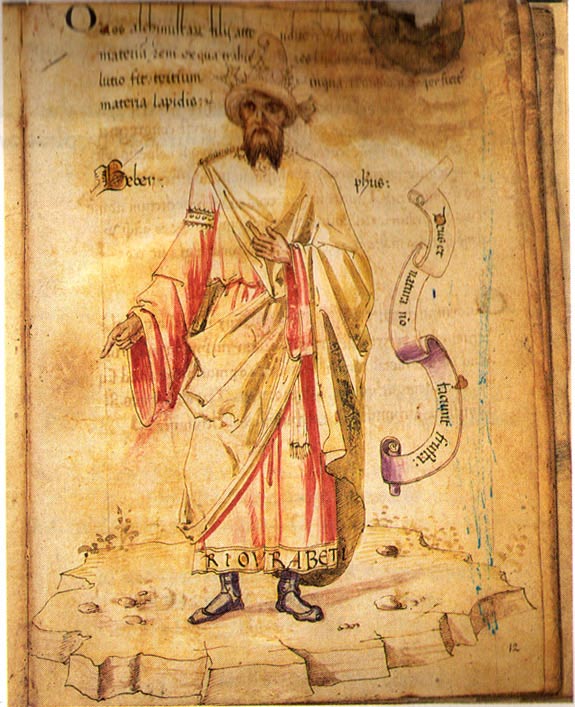
The alchemist Jabir ibn Hayyan, from a 15th century European portrait of Geber. (Public Domain)
These marvelous objects were seen in the palaces of Baghdad. Wind powered automata were grandly displayed around the ancient city of Baghdad in the mid-eighth century, and Caliph Al-Ma’mun is said to have had metal singing birds built by engineers. By the ninth century, a programmable flute player was described in the Banu Musa Brothers’ Book of Ingenious Devices.
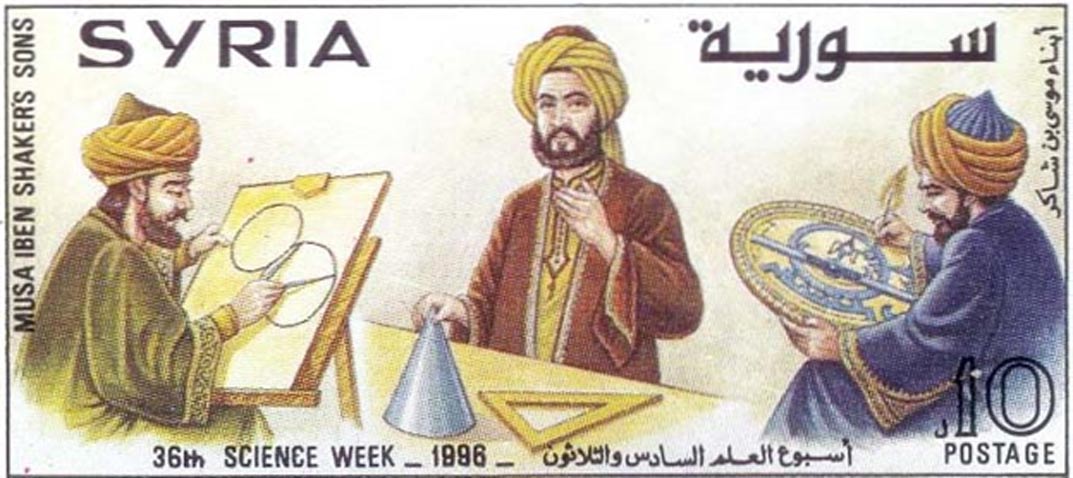
A depiction of the Banu Musa on a Syrian postage stamp. The Banu Musa Brothers were three 9th-century scholars in Baghdad. (Public Domain)
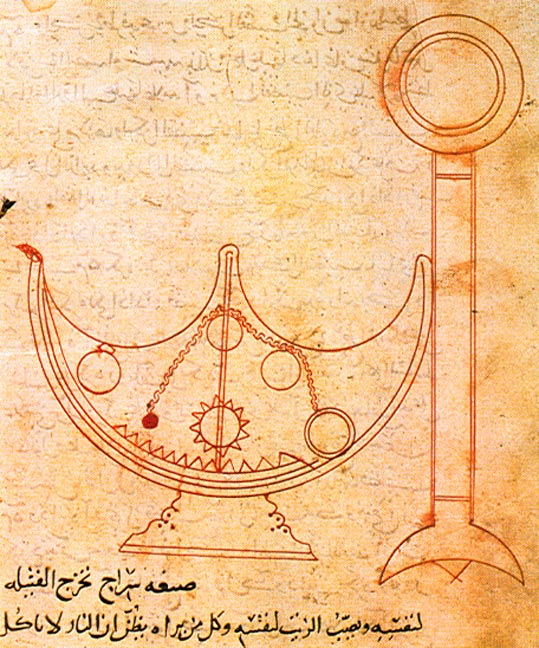
Original illustration of a self-trimming lamp discussed in the treatise on Mechanical Devices of Ahmad ibn Musa ibn Shakir. (Public Domain)
Ismail al-Jazarim (1136–1206 AD), Muslim polymath, mechanical engineer, artist and mathematician wrote his richly illustrated book, The Book of Knowledge of Ingenious Mechanical Devices in 1206. His work was inspired by the Banu Musa Brothers and other Arab inventors.
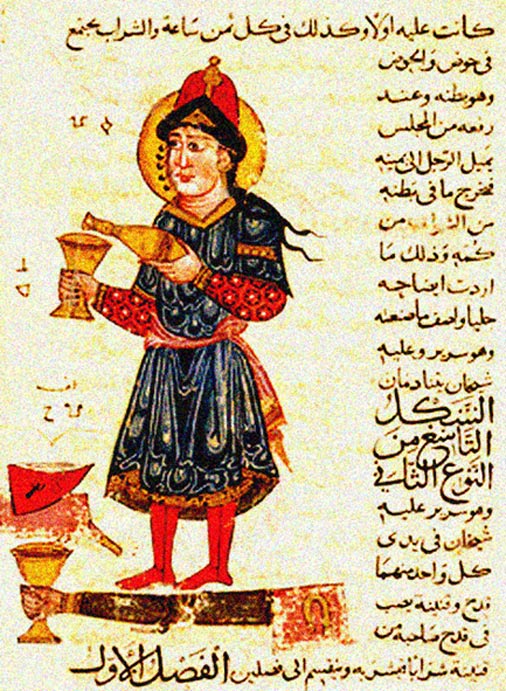
An illustration of a device invented by al-Jazari. (Public Domain)
Al-Jazarim compiled ‘recipes’ for over one hundred mechanical devices, many of them ‘trick’ items, but also including clocks, fountains, water raising systems and pumps—and even a musical robot band. This was an early programmable automaton composed of a harpist, a flautist and two drummers. It floated in fountains, played pre-programmed music (as determined by inner pegs and levers), for the entertainment of elite guests. The musicians could allegedly play different patterns and rhythms, as well as make realistic body movements, based on the position of the inner pegs.
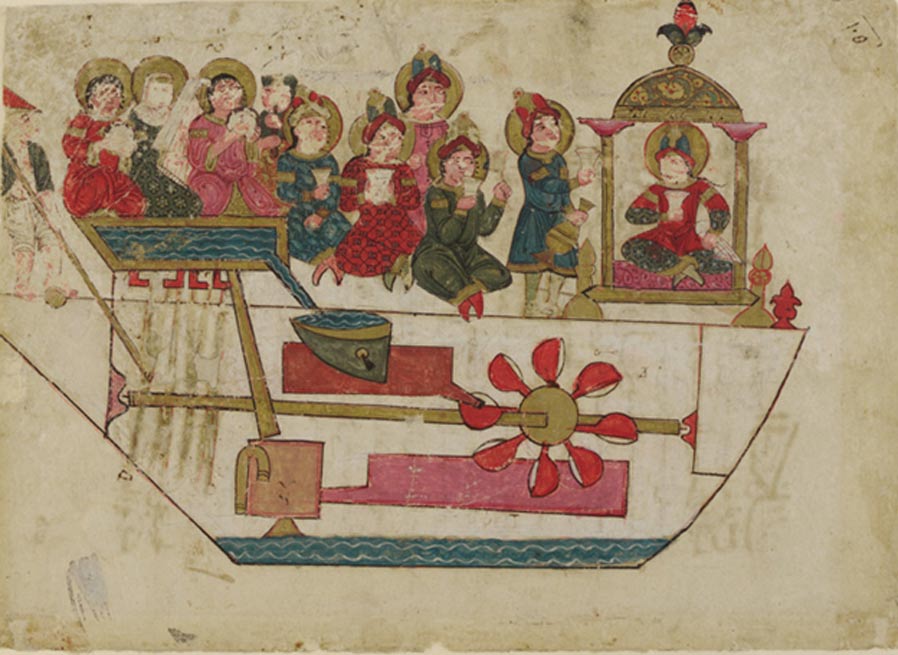
The programmable robot orchestra design by al-Jazari. (Public Domain)
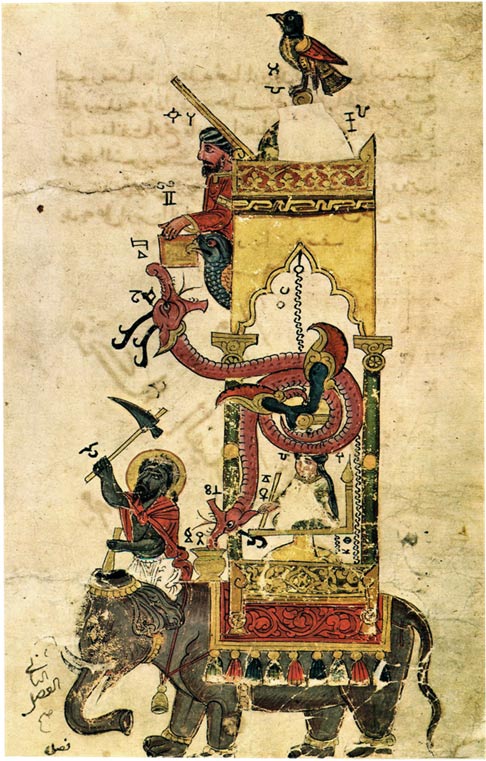
The elephant clock was one of the most famous inventions of al-Jazari. (Public Domain)
Renaissance Mechanical Masters
Leonardo da Vinci, renowned polymath and master of invention, mathematics, engineering, art and more, was famously fascinated with mechanical inventions, and is considered the original inventor of the helicopter and the tank. When it comes to automatons, like in many other fields, he was considered a pioneer.
Greek automata and engineering experienced a resurgence during the Renaissance, and scholars continued the research of ancient cultures, and built upon that knowledge.
Da Vinci’s notable automata concepts include a knight—a warrior in medieval armor, its design intended it to make human-like movements. Dubbed “Leonardo’s Robot” sketches of the components were referenced by modern roboticists to create a replica, and the modern knight-robot was shown to be fully functional.
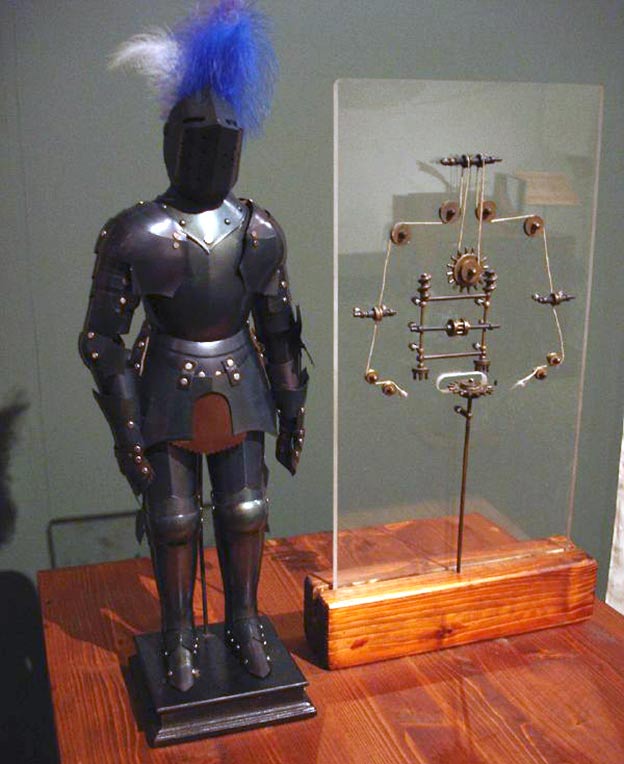
A model of Da Vinci’s Robot. (Flickr/CC BY 2.0)
In recognition of da Vinci’s work in automata and mechanical invention, highly advanced surgical robots and telerobotics (remote or long-distance surgical robots) now sport his name.
The great inventor also is said to have made a lion automata for King Louis XII of France. With no first-hand accounts, it’s only alleged that the lion advanced on the king, stopped, opened its chest and revealed a fleur-de-lis coat of arms of France.
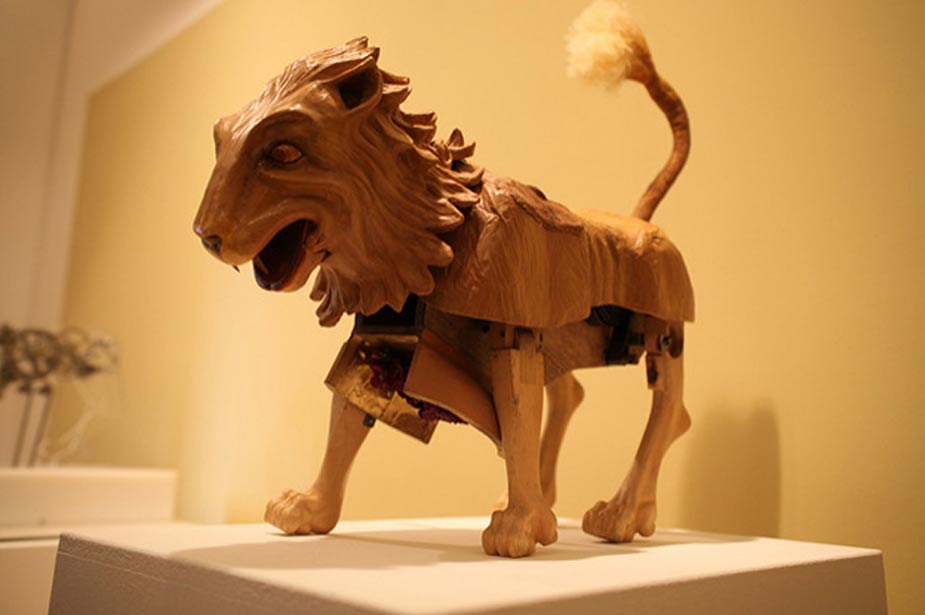
A wooden lion automaton. (Flickr/CC BY 2.0)
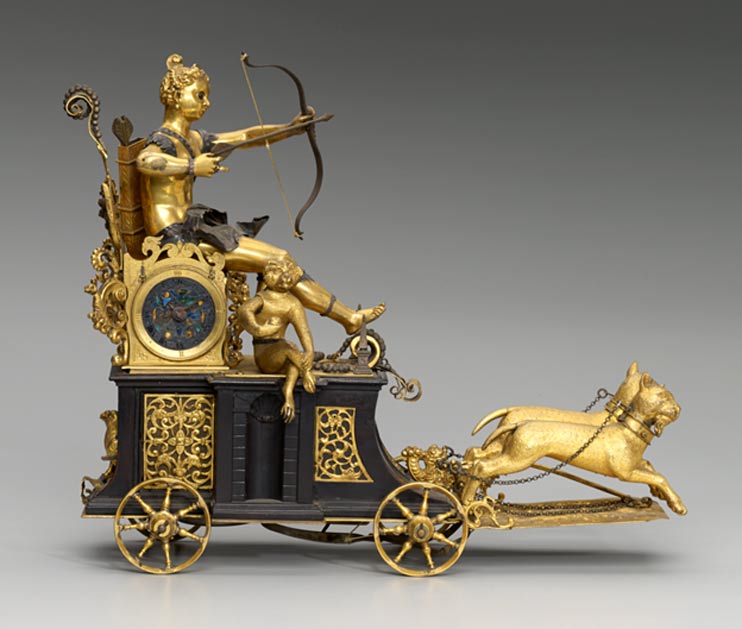
An automaton chariot clock of the Renaissance. South Germany, c. 1610. “Diana has moving eyes connected to the clockwork and when a mechanism inside the case is wound up the chariot rolls forward, the two leopards leap, the bird comes forward, and the monkey eats the apple. If all these elements are set in motion the goddess shoots her arrow.” (Public Domain)
Europe’s automata heyday in the 18th century is typified by the outstanding creations of Swiss inventor Pierre Jaquet-Droz (1721–1790). A luxury watch maker, he, and later his sons, created astonishing devices, containing tens of thousands of minute working parts and coded disks, and which fascinated kings and emperors around the world.
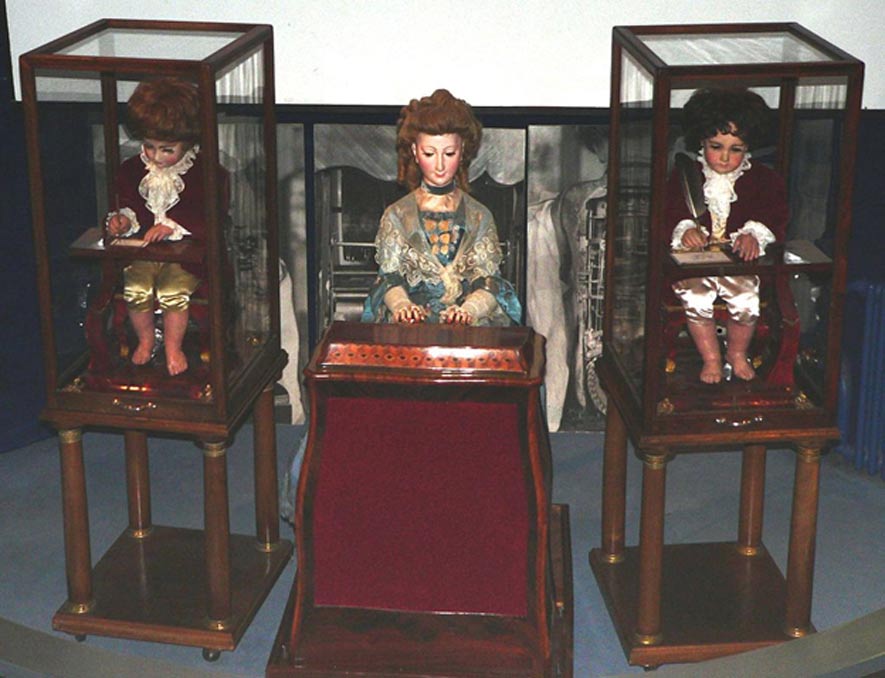
The Jaquet-Droz automata. (CC BY-SA 2.0fr)
These complex ‘dolls’ could (and still can) pen letters, draft images, and play instruments, executing a wide variety of specialized set programs. These are considered the finest examples of human mechanical problem solving, and predate the ‘father of the computer’ Charles Babbage’s concepts by decades.
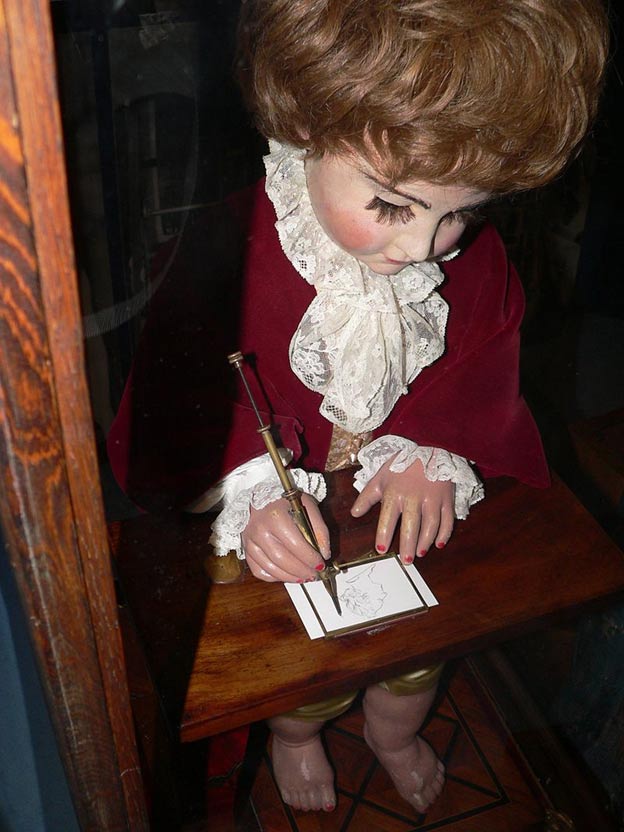
Jaquet-Droz automaton draws an image of a woman, penning the image perfectly as it has done so hundreds, if not thousands of times. (CC BY-SA 2.0fr)
Now largely relegated to the realms of art and design, and separated somewhat from modern mechanical engineering or robotics, automata continue to fascinate.
Humans still wish to be creators of life, harness animals and the forces of nature, and bridge the divide between man and machine. Across the eons, automata have inspired fear and suspicion, wonder and delight. Even now, we cannot imagine a future without robots, and are rushing to take the next step: bringing intelligent, thinking life to our inanimate creations.
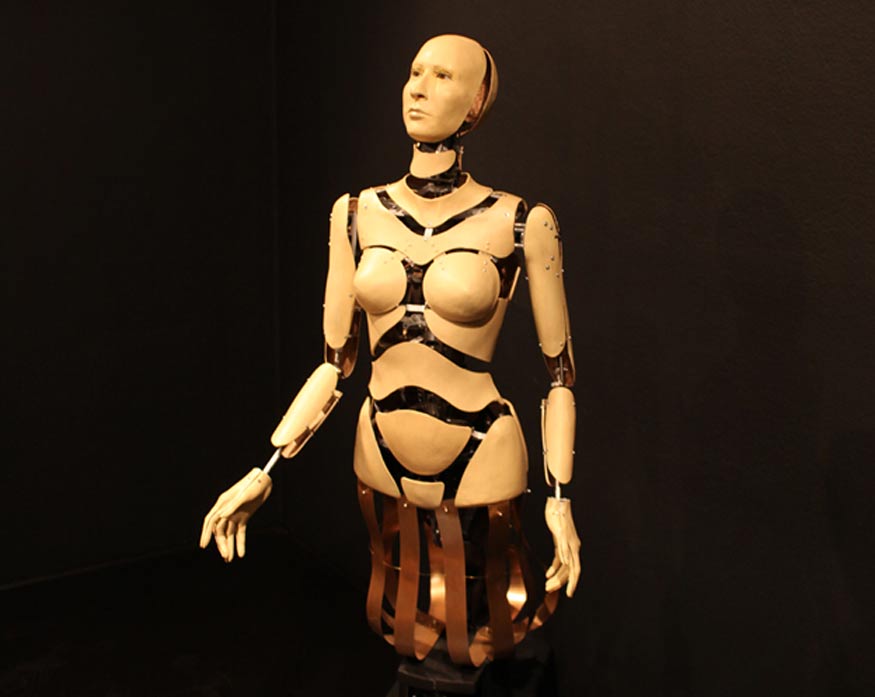
Corpo Automi Robot (Flickr/CC BY 2.0)
Featured image: Deriv; Corpo Automi Robot (Flickr/CC BY 2.0), Hephaestus at the forge, designs by al-Jazari.
References
Evan Andrews, 2014. 7 Early Robots and Automatons. History.com [Online] Available at: http://www.history.com/news/history-lists/7-early-robots-and-automatons
RobotShop Distribution Inc., 2008. History of Robotics: Timeline [PDF] Robotshop.com [Online] Available at: http://www.robotshop.com/media/files/PDF/timeline.pdf
Jimmy Stamp, 2013. A Brief History of Robot Birds. Smithsonian.com [Online] Available at: http://www.smithsonianmag.com/arts-culture/a-brief-history-of-robot-birds-77235415/?no-ist
Tom Standage, 2002. Monster in a Box. Wired.com [Online] Available at: http://www.wired.com/2002/03/turk/
Greek Automata: (Gr: Automatos - 'self-moving'). 2016. Ancient-Wisdom.com [Online] Available at: http://www.ancient-wisdom.com/greekautomata.htm
Suzanne Smith, 2016. The Tripods of Hephaestus. Academia.edu [Online] Available at: http://www.academia.edu/2517186/The_Tripods_of_Hephaestus
E.R. Truitt, 2015. Preternatural machines. Aeon.co [Online] Available at: https://aeon.co/essays/medieval-technology-indistinguishable-from-magic
Stefano Franchi, Güven Güzeldere, 2004. Mechanical Bodies, Computational Minds: Artificial Intelligence from Automata to Cyborgs. Published by A Bradford Book (December 30, 2004)